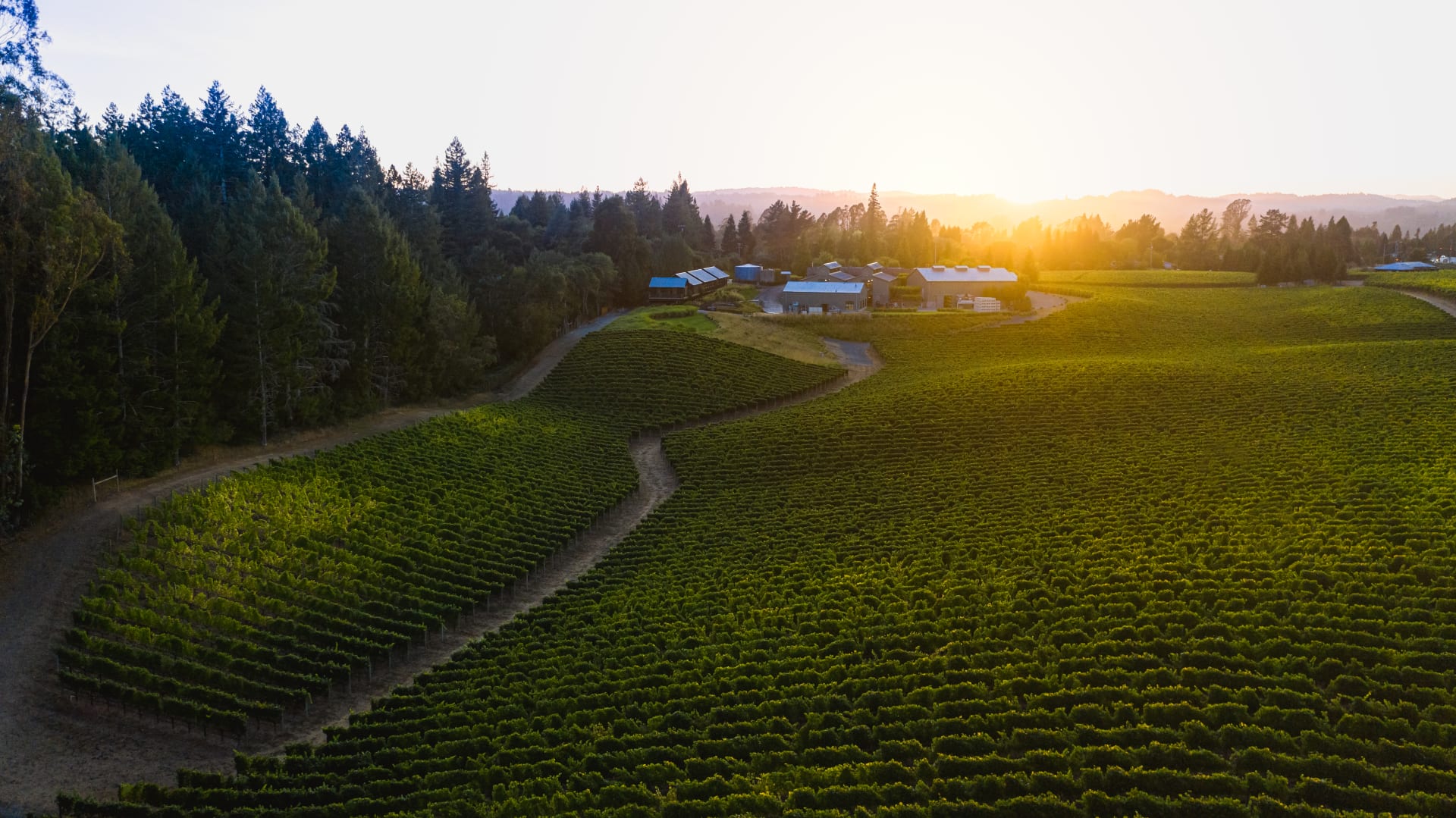Paul Hobbs Beckstoffer Las Piedras Cabernet Sauvignon 2015
-
Robert
Parker -
James
Suckling -
Wine
Spectator



Product Details
Your Rating
Somm Note
Winemaker Notes
Intense black garnet in color, this wine entices with complex aromas of ripe berries, green olives, graphite, and cracked black pepper. The dense palate offers lavish flavors of black currants, Herbs De Provence, cigar box and baker's cocoa. Chewy tannins lead to a captivating finish with hints of iodine and spice. We recommend decanting this wine in its youth.
Professional Ratings
-
Robert Parker's Wine Advocate
Inky purple-black in color, the 2015 Cabernet Sauvignon Beckstoffer Las Piedras Vineyard gives up notes of blueberry compote, preserved plums and ripe blackberries with touches of incense, dried Mediterranean herbs, menthol and aniseed plus a waft of mossy bark. Medium to full-bodied, the palate is very fine and wonderfully elegant, with incredibly ripe, silt-like tannins and just enough freshness to support the black and blue fruit layers, finishing on a lingering exotic spice note. This beauty should age very well indeed.
Rating: 98+ -
James Suckling
Fantastic aromas of sweet tobacco, currants and bark. Great complexity. Full and rich yet structured and intense. Excellent length. Excited about this.
Range:96-97 -
Wine Spectator
Firm, ripe tannins stand out, lending structure and vibrancy to this youngster, framing the core of dark berry, mineral, spice and cedar notes. Tails off a bit where the tannins pin the fruit. Best from 2021 through 2032.
Other Vintages
2019-
James
Suckling -
Robert
Parker -
Wine
Spectator
-
Robert
Parker -
James
Suckling -
Wine
Spectator
-
Robert
Parker -
James
Suckling -
Wine
Spectator
-
Robert
Parker -
James
Suckling -
Wine
Spectator
-
James
Suckling -
Robert
Parker -
Wine
Spectator
-
James
Suckling -
Robert
Parker -
Wine
Spectator
-
Robert
Parker -
James
Suckling -
Wine
Spectator
- Vinous
-
Wine
Enthusiast -
Wine
Spectator -
Robert
Parker

A noble variety bestowed with both power and concentration, Cabernet Sauvignon enjoys success all over the globe, its best examples showing potential to age beautifully for decades. Cabernet Sauvignon flourishes in Bordeaux's Medoc where it is often blended with Merlot and smaller amounts of some combination of Cabernet Franc, Malbecand Petit Verdot. In the Napa Valley, ‘Cab’ is responsible for some of the world’s most prestigious, age-worthy and sought-after “cult” wines. Somm Secret—DNA profiling in 1997 revealed that Cabernet Sauvignon was born from a spontaneous crossing of Cabernet Franc and Sauvignon Blanc in 17th century southwest France.

St. Helena is in the heart of the Napa Valley, nestled between Calistoga to the north and Rutherford on its southern border. On its western side, the Mayacamas Mountains guard it from the cooling effects of the Pacific Ocean; to its east stand the Vaca Mountains. In conjunction, these mountain ranges serve to lock in summer daytime heat. But in the evening, cool air from the San Pablo Bay funnels up through the valley, creating very chilly nights. It isn’t uncommon for temperatures to drop 50 degrees, a shift that promotes a balance of sugar ripeness and acidity in wine grapes.
St. Helena contains a plethora of different soil types in a small area, which have been enhanced over centuries by rain runoff from both mountain ranges. Its vineyards cover a variety of terrain, spreading across the bucolic valley floor and its benchlands.
These ideal topographic and climatic growing conditions easily caught the attention of early winemaking pioneers. In fact, St. Helena is the birthplace of Napa Valley’s commercial wine industry. Dr. Crane founded his cellar in 1859, David Fulton in 1860 and Charles Krug in 1861.
Today there are no less than 400 separate vineyards planted within the 12,000 acres that make up the St. Helena appellation.
Revered most for its red wines based on Bordeaux varieties, namely Cabernet Sauvignon, the St. Helena appellation is also a source of superior Syrah, Zinfandel and Sauvignon blanc.








